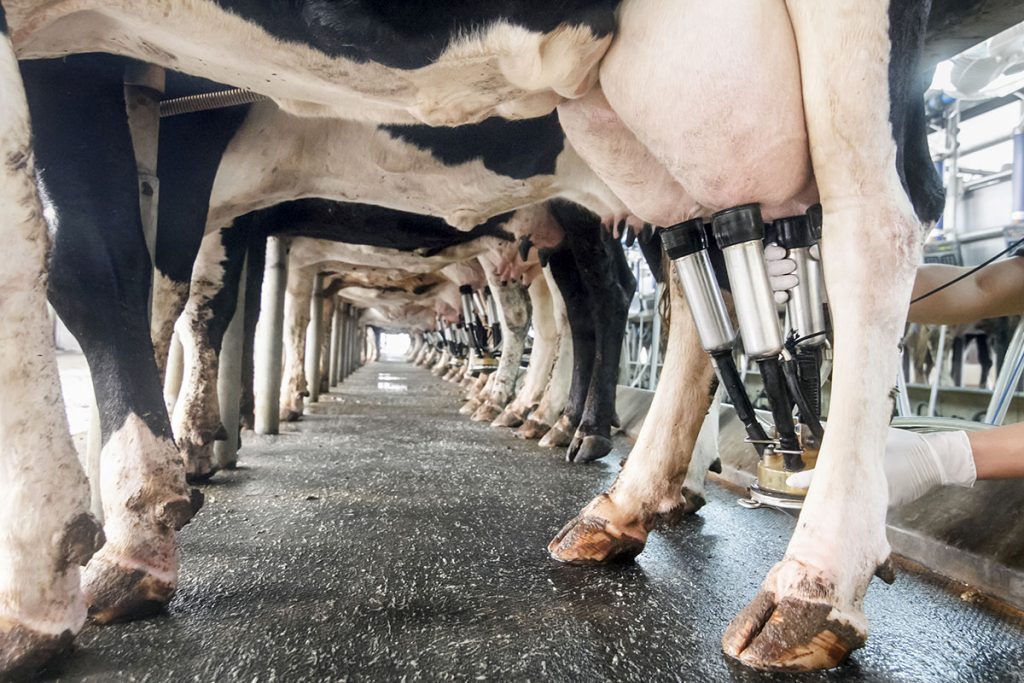Milking S. aureus-positive cows last is the single most important intervention we recommend, because the infection is usually spread from cow to cow during milking.
Milk from an infected cow can contaminate the cluster and cup liners. The bacteria can then be introduced into the teat canal of the next cow during the milking process via direct contact, and the cow can become infected.
The R-value (reproduction value – the number of cows an infected animal can infect over one lactation) for S. aureus infections can be anywhere up to 6(2). When you milk infected cows last or when you disinfect the clusters after milking an infected cow (e.g. through the use of an automatic or manual flush step), you can effectively interrupt the chain of infection. By milking infected cows last, you substantially reduce the risk of new infections and the subsequent impact on milk production, cell count and herd health.
(1)H.W. Barkema, Y.H. Schukken, R.N. Zadoks, Invited Review: The Role of Cow, Pathogen, and Treatment Regimen in the Therapeutic Success of Bovine Staphylococcus aureus Mastitis,Journal of Dairy Science,Volume 89, Issue 6, 2006.
(2)Swinkels JM, Hogeveen H, Zadoks RN. A partial budget model to estimate economic benefits of lactational treatment of subclinical Staphylococcus aureus mastitis. J Dairy Sci. 2005 Dec;88(12):4273-87. doi: 10.3168/jds.S0022-0302(05)73113-1. PMID: 16291618.


